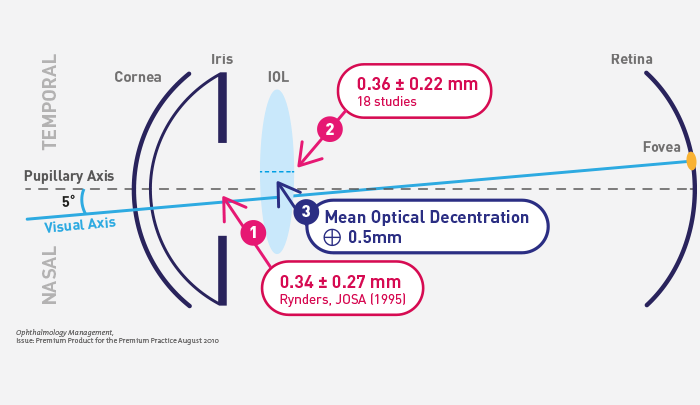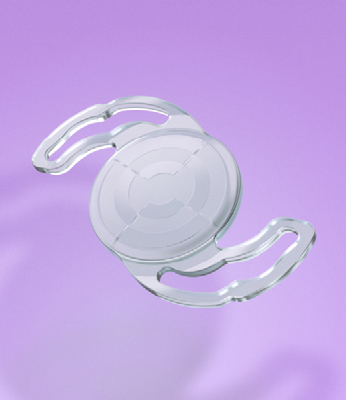Decentration Negatively Effects Vision
Angle Kappa and IOL decentration can have accumulative negative impact on vision.
1. Decentration between the visual axis and the pupil is about 1/3 of a millimeter;
2. Decentration between the center of the IOL and the center of the pupil is also about 1/3 of a millimeter;
3. Taken together, the mean optical decentration between the visual axis and the center of the IOL is about half a millimeter.
Angle Alpha - Potential Unpleasant Surprise
When there is a large (> 0.5 mm) angle alpha, the optical axis/center of the capsular bag may not match the patient’s visual axis, leading to a potentially unpleasant refractive surprise if a multifocal IOL is implanted.
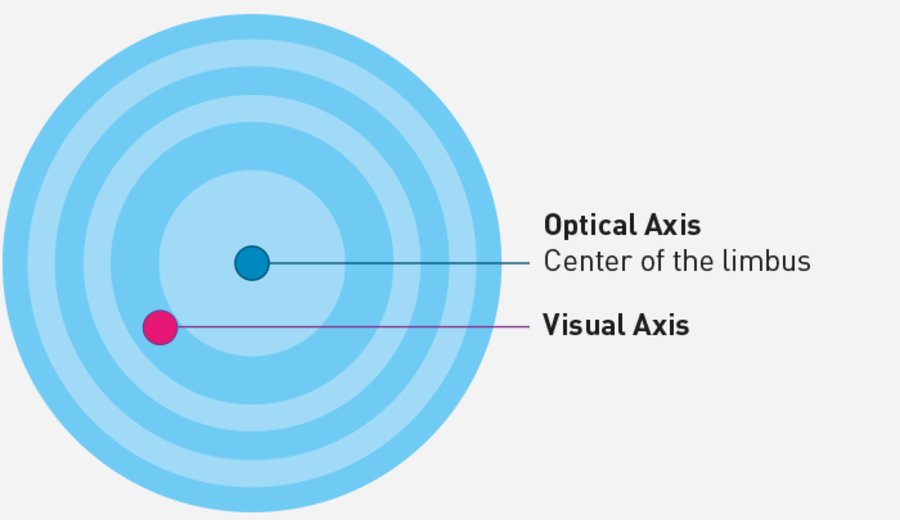
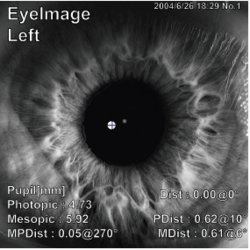 Clinical Case
Clinical Case
The image above shows the angle of kappa on a specific patient where the pupillary axis and the visual axis are measured. The difference between the two is represented in a photopic (Pdist) and mesopic (Mdist) condition. It is important that both axis are aligned within the IOL central zone to avoid visual disturbances.
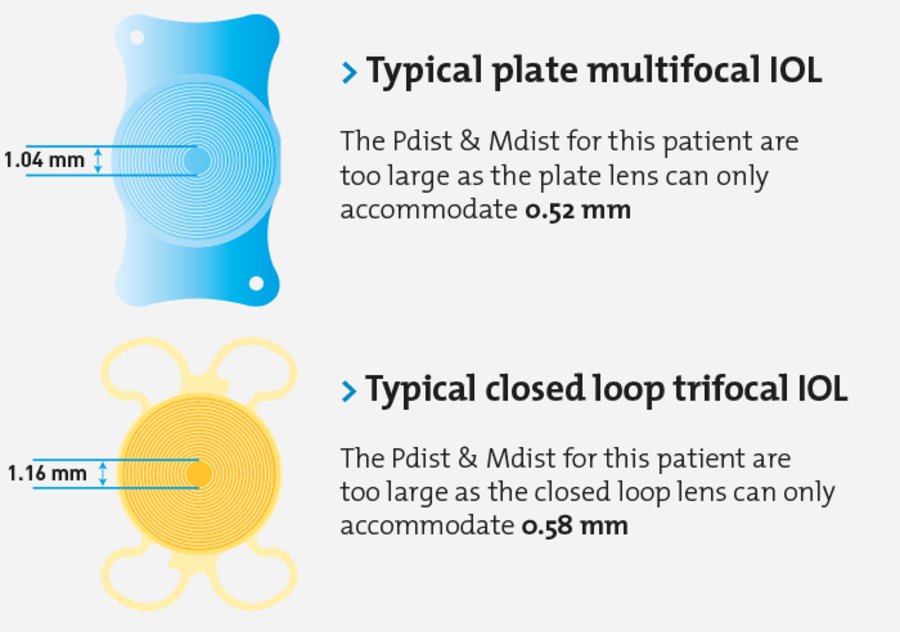
What can we learn?
For this clinical case and in a typical multifocal IOL as shown above, the patient’s visual axis would be overlapping the multifocal concentering rings. This means that the patient can expect visual disturbances and may not be considered a good candidate for traditional multifocal IOLs.
However, PrecizonPresbyopic NVA has a central zone of 1.4 mm in diameter in one direction, and 2.6 mm in diameter in perpendicular direction (“butterfly shaped”) and can be oriented so that the visual axis passes through the wider central segment (simulation to the right).
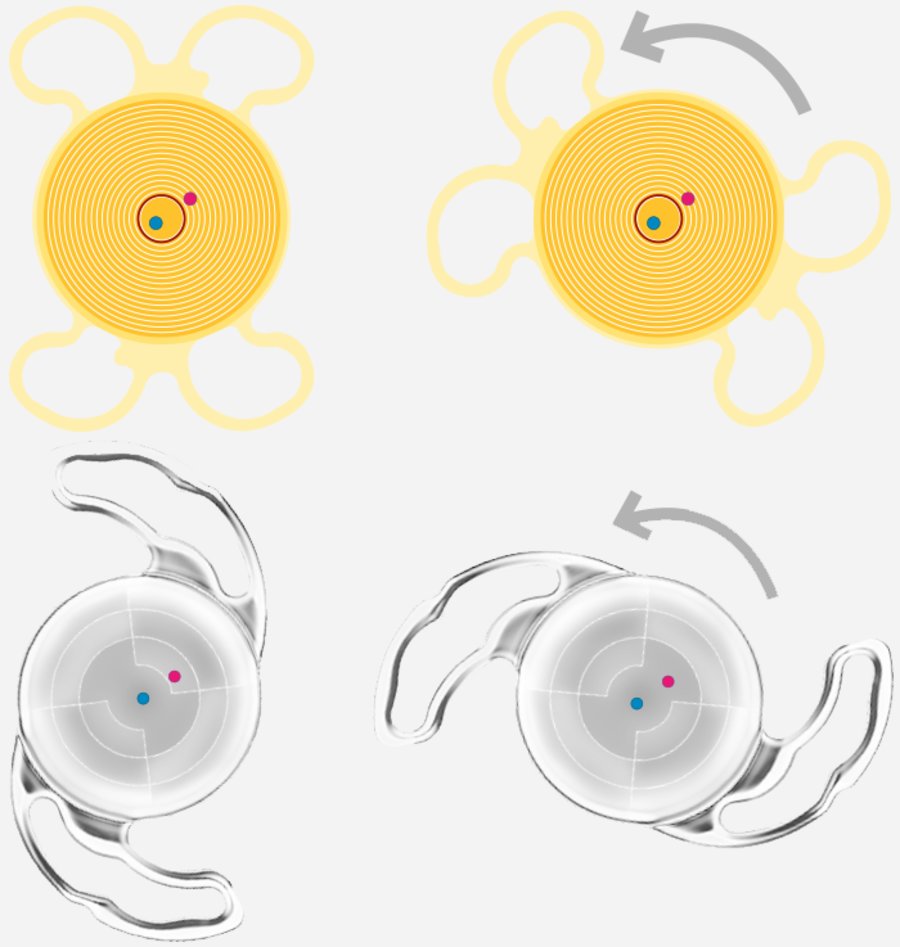
1. Majid Moshirfar, Ryan N. Hoggan,1 and Valliammai Muthappan Oman J Ophthalmol. 2013 Sep-Dec; 6(3): 151–158. doi: 10.4103/0974-620X.122268
2. Source: https://crstoday.com/articles/2016-mar/using-angle-alpha-in-premium-iol-screening

